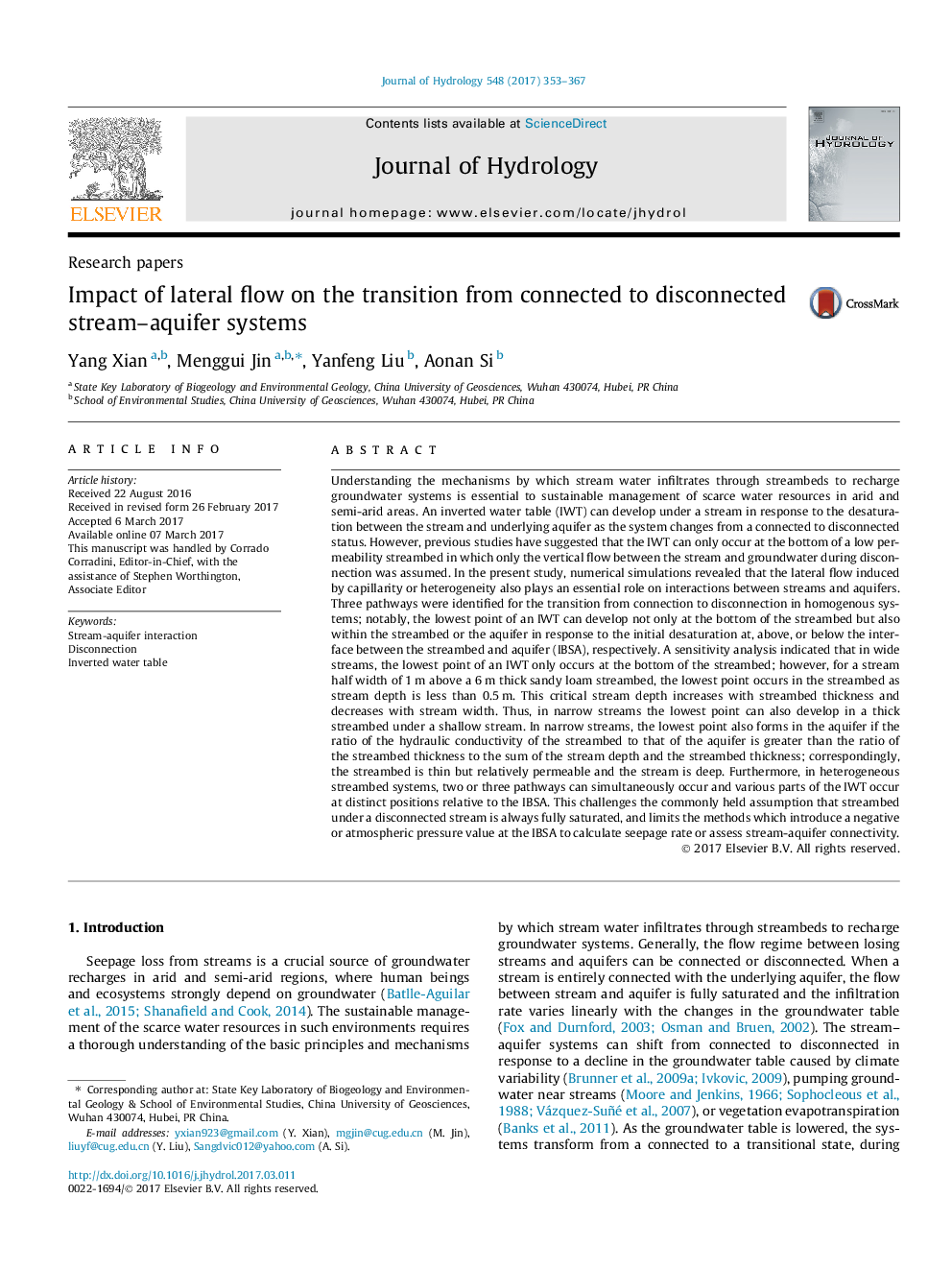| کد مقاله | کد نشریه | سال انتشار | مقاله انگلیسی | نسخه تمام متن |
|---|---|---|---|---|
| 5771234 | 1629906 | 2017 | 15 صفحه PDF | دانلود رایگان |

- Disconnection points can not only occur in aquifers but also in clogging layers.
- Streambeds under disconnected streams are not always fully saturated.
- Pressures at the base of streambed can be positive for disconnected systems.
- A comparison groundwater levels with streambed can not ensure connection status.
Understanding the mechanisms by which stream water infiltrates through streambeds to recharge groundwater systems is essential to sustainable management of scarce water resources in arid and semi-arid areas. An inverted water table (IWT) can develop under a stream in response to the desaturation between the stream and underlying aquifer as the system changes from a connected to disconnected status. However, previous studies have suggested that the IWT can only occur at the bottom of a low permeability streambed in which only the vertical flow between the stream and groundwater during disconnection was assumed. In the present study, numerical simulations revealed that the lateral flow induced by capillarity or heterogeneity also plays an essential role on interactions between streams and aquifers. Three pathways were identified for the transition from connection to disconnection in homogenous systems; notably, the lowest point of an IWT can develop not only at the bottom of the streambed but also within the streambed or the aquifer in response to the initial desaturation at, above, or below the interface between the streambed and aquifer (IBSA), respectively. A sensitivity analysis indicated that in wide streams, the lowest point of an IWT only occurs at the bottom of the streambed; however, for a stream half width of 1Â m above a 6Â m thick sandy loam streambed, the lowest point occurs in the streambed as stream depth is less than 0.5Â m. This critical stream depth increases with streambed thickness and decreases with stream width. Thus, in narrow streams the lowest point can also develop in a thick streambed under a shallow stream. In narrow streams, the lowest point also forms in the aquifer if the ratio of the hydraulic conductivity of the streambed to that of the aquifer is greater than the ratio of the streambed thickness to the sum of the stream depth and the streambed thickness; correspondingly, the streambed is thin but relatively permeable and the stream is deep. Furthermore, in heterogeneous streambed systems, two or three pathways can simultaneously occur and various parts of the IWT occur at distinct positions relative to the IBSA. This challenges the commonly held assumption that streambed under a disconnected stream is always fully saturated, and limits the methods which introduce a negative or atmospheric pressure value at the IBSA to calculate seepage rate or assess stream-aquifer connectivity.
Journal: Journal of Hydrology - Volume 548, May 2017, Pages 353-367